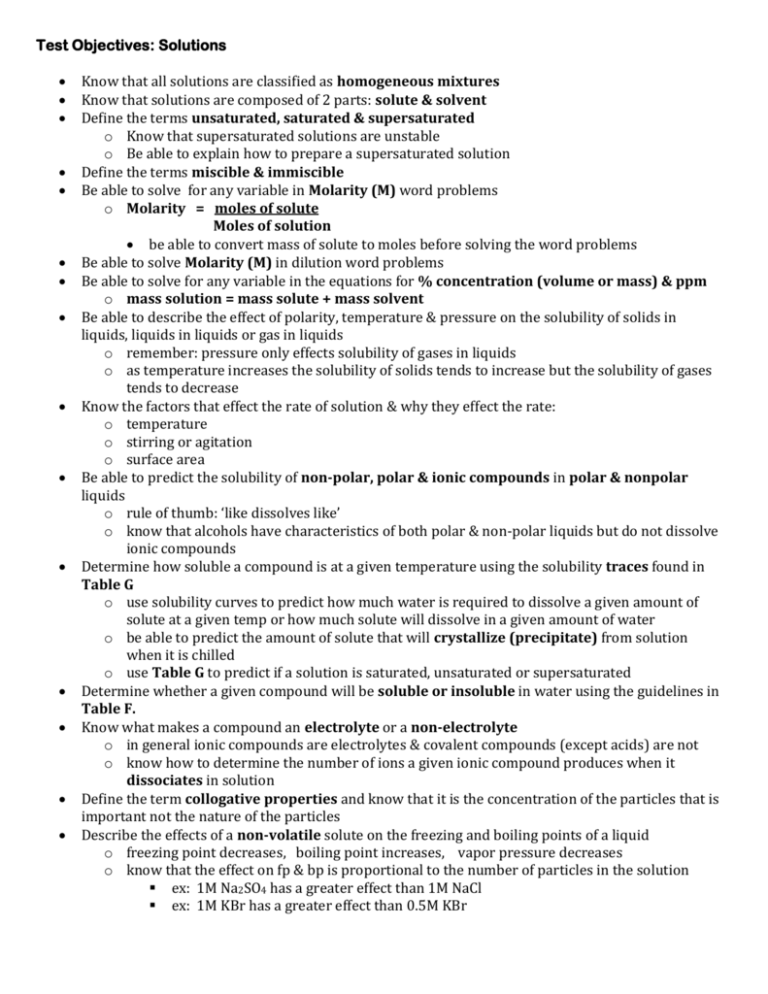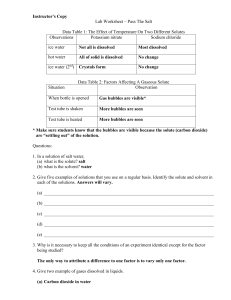Regents Chemistry
advertisement

Test Objectives: Solutions Know that all solutions are classified as homogeneous mixtures Know that solutions are composed of 2 parts: solute & solvent Define the terms unsaturated, saturated & supersaturated o Know that supersaturated solutions are unstable o Be able to explain how to prepare a supersaturated solution Define the terms miscible & immiscible Be able to solve for any variable in Molarity (M) word problems o Molarity = moles of solute Moles of solution be able to convert mass of solute to moles before solving the word problems Be able to solve Molarity (M) in dilution word problems Be able to solve for any variable in the equations for % concentration (volume or mass) & ppm o mass solution = mass solute + mass solvent Be able to describe the effect of polarity, temperature & pressure on the solubility of solids in liquids, liquids in liquids or gas in liquids o remember: pressure only effects solubility of gases in liquids o as temperature increases the solubility of solids tends to increase but the solubility of gases tends to decrease Know the factors that effect the rate of solution & why they effect the rate: o temperature o stirring or agitation o surface area Be able to predict the solubility of non-polar, polar & ionic compounds in polar & nonpolar liquids o rule of thumb: ‘like dissolves like’ o know that alcohols have characteristics of both polar & non-polar liquids but do not dissolve ionic compounds Determine how soluble a compound is at a given temperature using the solubility traces found in Table G o use solubility curves to predict how much water is required to dissolve a given amount of solute at a given temp or how much solute will dissolve in a given amount of water o be able to predict the amount of solute that will crystallize (precipitate) from solution when it is chilled o use Table G to predict if a solution is saturated, unsaturated or supersaturated Determine whether a given compound will be soluble or insoluble in water using the guidelines in Table F. Know what makes a compound an electrolyte or a non-electrolyte o in general ionic compounds are electrolytes & covalent compounds (except acids) are not o know how to determine the number of ions a given ionic compound produces when it dissociates in solution Define the term collogative properties and know that it is the concentration of the particles that is important not the nature of the particles Describe the effects of a non-volatile solute on the freezing and boiling points of a liquid o freezing point decreases, boiling point increases, vapor pressure decreases o know that the effect on fp & bp is proportional to the number of particles in the solution ex: 1M Na2SO4 has a greater effect than 1M NaCl ex: 1M KBr has a greater effect than 0.5M KBr











